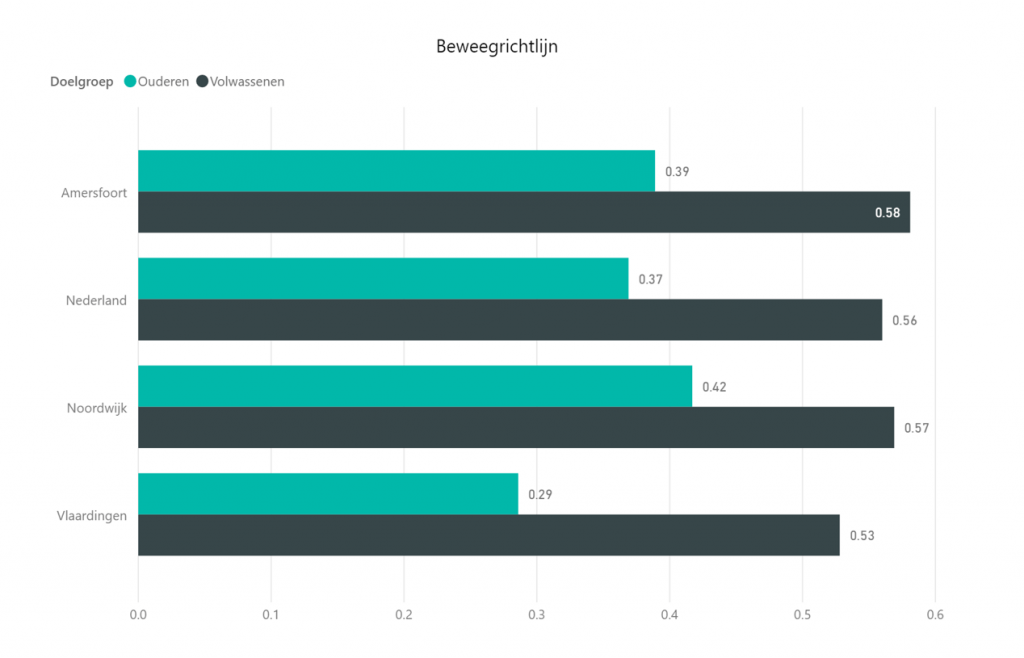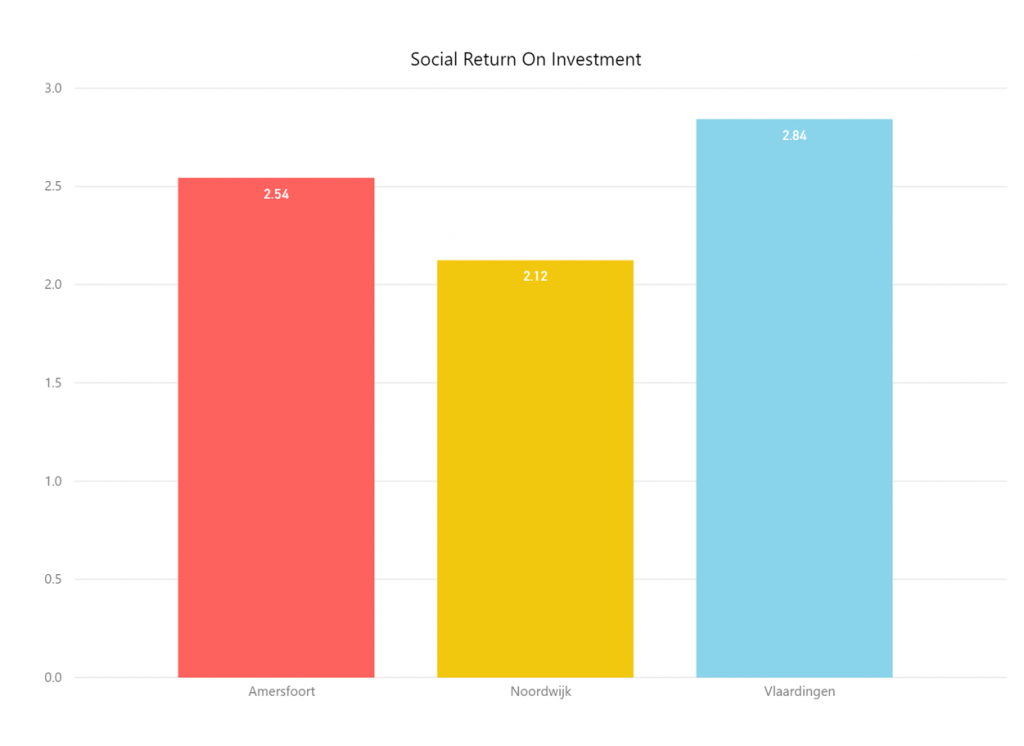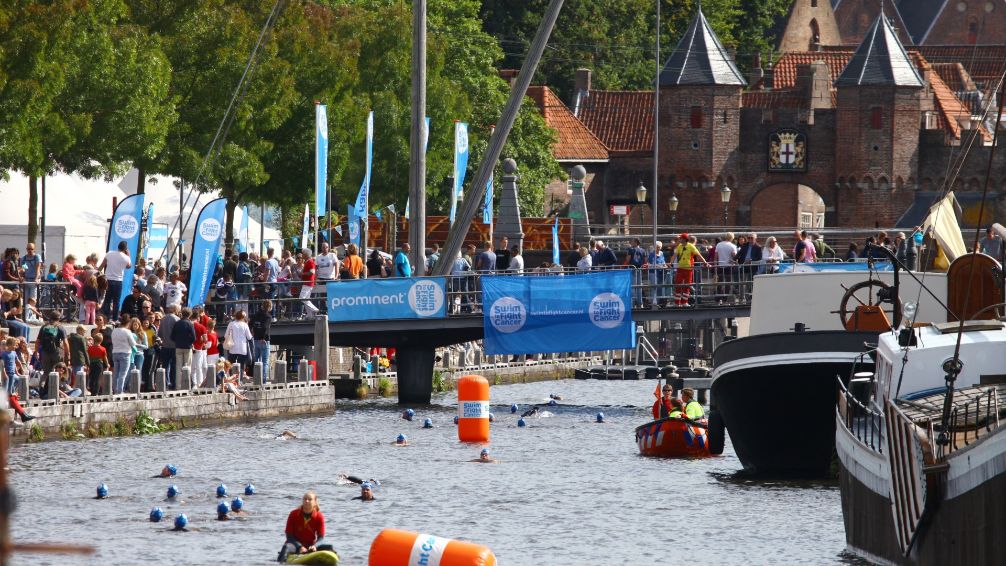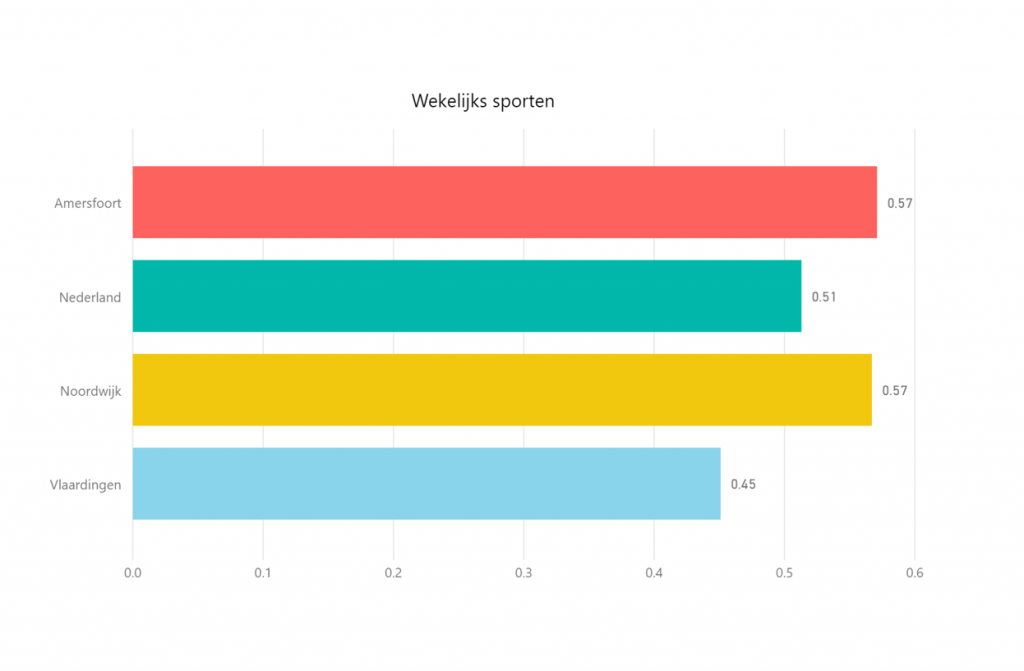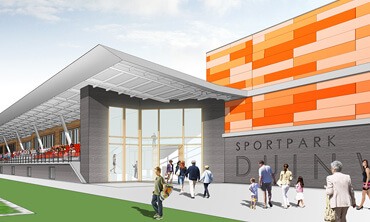The SROI (social return on investment) for sport and exercise shows whether investments provide added value to the municipality from a social perspective. There are significant differences in SROI results between municipalities. Explaining the SROI provides interesting insights and points of interest for future municipal policy. Especially if the analysis spreads beyond municipal boundaries. What is the SROI in similar municipalities? Why is there a difference? What can municipalities learn from each other’s policy choices?
Since last summer we have been able to express the social value of sport and exercise in return. The return on investment (SROI) for sport and exercise in the Netherlands is estimated at 2.51. In other words: every euro invested pays for itself about 2.5 times. Therefore, the investments made by the government, municipalities, residents, businesses and others in sport and exercise provide ample social added value.
The average return on investment (SROI) for sport and exercise is around 2.5 and ranges between 1.6 and 3.4 per municipality.
The social benefits of sport and exercise vary from one municipality to another. A number of components cause differences in the SROI structure:
- Municipal spending on sports facilities,
- Average athletes’ contribution expenses,
- Average spending on fitness
- The age structure of the local population,
- and the number of people meeting exercise guidelines.
The return on local investment therefore represents a balance between all expenditures (not just by the municipalities themselves) and social benefits. The rate of return on investment (SROI) for each municipality ranges between 1.60 and 3.40. In all cases there is added value, but there are significant differences.
Experience with “Amersfoort-SROI Case Study”
Silvio Melia, Policy Officer at Amersfoort Municipality:
“It is striking that the research showed that as a municipality we invest relatively a lot in sports equipment such as infrastructure and bricks. Such a result provides food for thought: do we want to do it this way and continue to do it, or is it time to contribute more to the promotion For Sports? Sports SROI gives you considerations and encourages you to look at your actions based on results.
“Research has generated trust, for example to improve our communications with businesses. With data available, it has become much easier to start a targeted conversation with business partners. (…) What the research shows is that more can be achieved through sport if there is good collaboration. Investments are becoming more effective, and this should be attractive.
A comparison of case studies shows why the local return on investment (SROI) varies.
The return on investment (SROI) for sport and exercise in Amersfoort (2.54) is close to the Dutch average. The SROI in Noordwijk (2.12) is lower and in Vlaardingen it is higher (2.84).
Amersfoort
In 2017, Amersfoort municipality spent €67.70 per resident from its sports budget, which is higher than the national average. When allocating other cost items, such as care and fitness, the costs per resident in Amersfoort are also slightly higher than the average in our country. As for expenditure on fitness, this can be explained, for example, by the relatively high proportion of fitness practice in the municipality. The percentage of Amersfoort residents who adhere to exercise guidelines – upon which social benefits are calculated – is also higher than the national average. Overall, this results in the return on investment (SROI) being higher than 2.51 in Amersfoort.
Based on sport and exercise behavior alone, the ROI in Vlaardingen is expected to be relatively low – 46.7% of people meet exercise guidelines – and Nordvik is relatively high – 53.1% of people meet exercise guidelines. The opposite is true. This can be explained by the difference in municipal spending.
Nordvik and Vlaardingen
The municipality of Nordvik renovated a lot of old properties during the credit crisis. The result is that Nordvik will have a modern sports infrastructure in the coming decades. In addition to the scale of the renovation task, the level of ambition is also a reason for the relatively high costs. Noordwijk invests a lot in high-quality facilities in order to generate economic benefits. This is not reflected in the SROI.
to Vlaardingen There are various explanations for the relatively low per capita spending. This can largely be attributed to the sporting infrastructure. Vlaardingen, for example, has a relatively limited supply of indoor sports spaces, and investment in public spaces has been partly made explicitly with the aim of sports and exercise, but they lie outside the sports budget and therefore outside the SROI as well. Vlaardingen – unlike Nordwijk – is on the cusp of several major new construction projects to replace old sports facilities.
Thus, in-depth analysis not only helps in better understanding the return on investment (SROI) for each municipality, but also helps in determining the “bare number”.
Understanding SROI leads to useful insights for new policy
Trying to explain the return on investment (SROI) of sport and exercise in a municipality not only provides an interesting puzzle for researchers, but also provides new knowledge for policy. The in-depth analysis of each municipality provides insights that cannot simply be read from the number itself. This case study provides a better understanding of the story behind SROI. This gives municipalities ideas for future policy, with which they can increase the impact of their activities in sport and exercise.
“The Nordwijk Experience” with SROI case study
Ferdi Nougtrain, Policy Officer at the Municipality of Noordwijk:
“We have seen that Nordvik achieves very good results in countryside sports. The sea, sand dunes and forests make playing sports in this municipality attractive. We see it as a challenge to make better use of this.
“The SROI result provides an idea; we now have to return to work from a broader perspective, in addition to maintaining the order of our accommodations. Trade union participation is relatively high in our municipality. This provides opportunities, especially in establishing contacts for initiatives in the social field. (…) “Investments made in sports facilities during times of crisis will one day pay off, and we are excited to see what the return on investment will look like in five years.”
from Sports and Municipalities Magazine (September 2019)
A new round of case studies will begin in 2020
A new series of SROI case studies began in the fall of 2019. This time, Almer, Hague and Eide are in the spotlight. An additional element of the case studies is to conduct a group discussion with municipalities that have similar socio-economic characteristics and are approximately the same size. In the group discussion, municipalities jointly consider differences in the SROI structure and how these differences can be explained. This is expected to lead to the exchange of experiences and richer insights for future policy making.
It makes sense for every municipality To gain knowledge In the structure of the local SROI for sport and exercise, how it differs from other similar municipalities and what is the explanation for this. A new round of case studies will start in 2020, for which several municipalities have already registered. The careful design of the case studies in 2020 is based on the experiences of this fall.
Investing in sports and exercise pays off
Research shows that sport and exercise have added social value. This social and economic value was recalculated in 2021 by the research agency Ecorys. When someone participates in sports or exercise on a structural basis, it can generate up to €75,000 of social value per person, over the rest of their life. These are health, social and employment benefits. Ecorys investigated these benefits and expresses them in euros for three age groups. Looking at Chart and full report. Read also: What is the social and economic value of sports and exercise?
Consulting firm Rebel and the Mulier Institute compared these returns with the social costs of being able to exercise – the social return on investment (SROI). It turns out that the social benefits are 2.7 times higher than the costs incurred. This means that investing in sport and exercise has social value. is reading search And he offered De chart To get results in one overview. Want more clarification? Then read: Return on investment in sport and exercise: Social benefits are 2.7 times higher than the costs
Your local personals at a glance
The return on investment (SROI) for sports and exercise is not the same everywhere locally. The Knowledge Center for Sport and Exercise has prepared an infographic that provides an overview Local SROI personality and other key figures related to sports and exercise The municipality is visible. By looking at this data, you as a political leader can demonstrate the importance of investing in sport and doing better. You can use the overview in conversations within your municipality or with other sectors. It’s also a useful overview to use as a rough outline for your mathematical and exercise notes or vision. Curious about the numbers for your municipality? Then quickly order the chart. You will receive this in your inbox within five business days.
More knowledge about the value of sports and exercise:
Read more about SROI

“Professional reader. Award-winning gamer. Zombie buff. Social media junkie. Bacon maven. Web scholar.”

